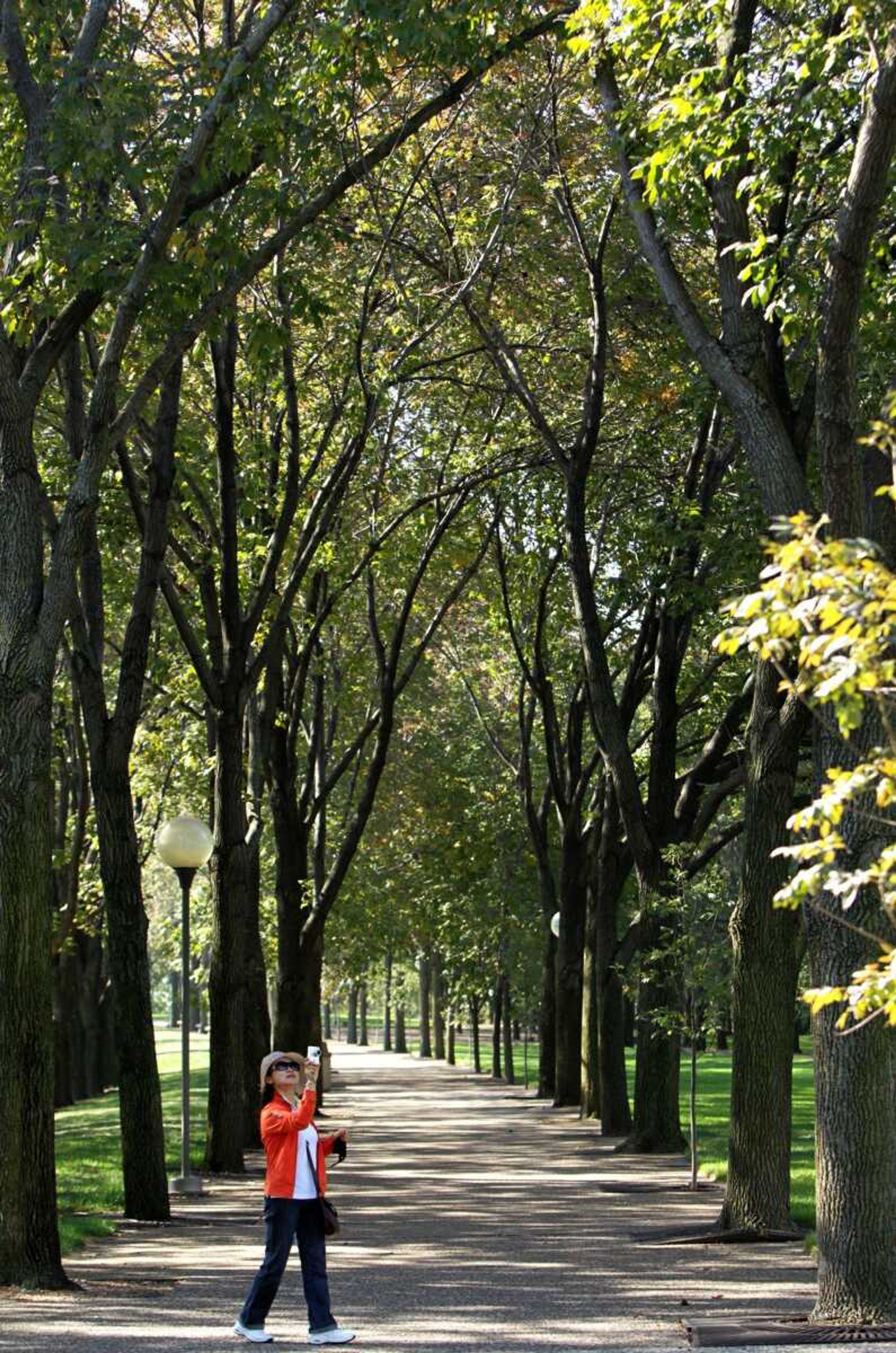Trees on Arch grounds may be doomed
ST. LOUIS -- Emerald ash borers haven't yet struck ash trees in the St. Louis area, but officials with the National Park Service say it is only a matter of time before they arrive. And that's bad news for the grounds of the Gateway Arch. The ash borer has decimated ash trees in several states. ...
ST. LOUIS -- Emerald ash borers haven't yet struck ash trees in the St. Louis area, but officials with the National Park Service say it is only a matter of time before they arrive. And that's bad news for the grounds of the Gateway Arch.
The ash borer has decimated ash trees in several states. The St. Louis Post-Dispatch reported that the park service will hold a meeting today at the Old Courthouse downtown to discuss possible alternatives to replace the approximate 1,000 ash trees on the Arch grounds.
The newspaper said the park service may decide to pre-emptively cut down the ash trees that make up about two-fifths of the trees in the 91-acre park. Or officials may wait until the ash borer arrives. They may decide to plant trees between the existing ones so the new trees will have a chance to mature before an infestation sets in, but that has drawbacks, too.
"That could ruin the whole look of it," said Frank Mares, deputy superintendent for the Jefferson National Expansion Memorial, the formal name for the Arch and its grounds. "It'll be tricky."
The emerald ash borer, first identified in Michigan eight years ago, has spread to 15 states. It showed up near Lake Wappapello in Southeast Missouri in 2008, but so far, the insects have not been seen elsewhere in the state.
Nationwide, millions of trees have been killed by the borers. Though they don't fly long distances, they tend to be spread as firewood is transported from regions where there is infestation.
"It's been able to find its way pretty easily," said Steven Cline, manager of the Kemper Center for Home Gardening at the Missouri Botanical Garden in St. Louis.
Cline estimated that 10 percent to 30 percent of the trees in St. Louis are ash trees. The percentage in the city's parks, including, Forest Park, is even higher, according to a Missouri Department of Conservation survey.
The Arch ash trees were planted in the 1970s, not long after the Arch was completed in 1965. The landscape designer, Dan Kiley, originally wanted tulip poplars, but nurseries and contractors said they wouldn't thrive at the site.
Tulip poplars are among the top alternatives now being considered as replacements.
Just having one type of tree creates a monoculture, and "monocultures are unstable," Mares said.
The park service recently held a design competition seeking ideas to give the Arch grounds a new look. A design by Michael Van Valkenburgh Associates of Brooklyn, N.Y., was selected last month.
But, Mares said, "they are deferring to us in this process, because this would take place whether there was a design competition or not."
Connect with the Southeast Missourian Newsroom:
For corrections to this story or other insights for the editor, click here. To submit a letter to the editor, click here. To learn about the Southeast Missourian’s AI Policy, click here.










